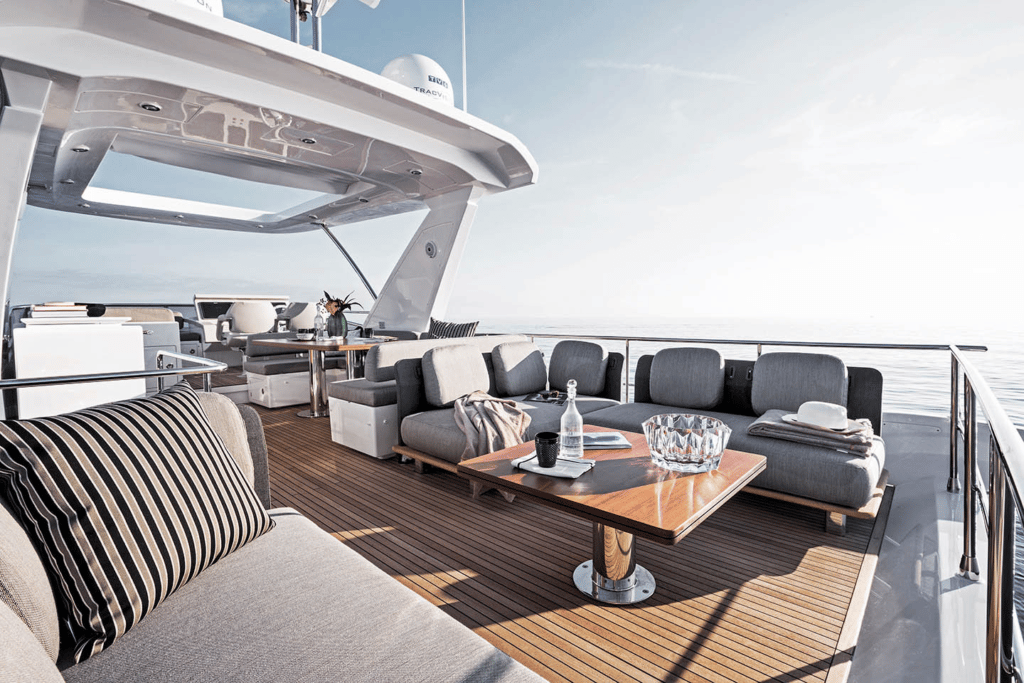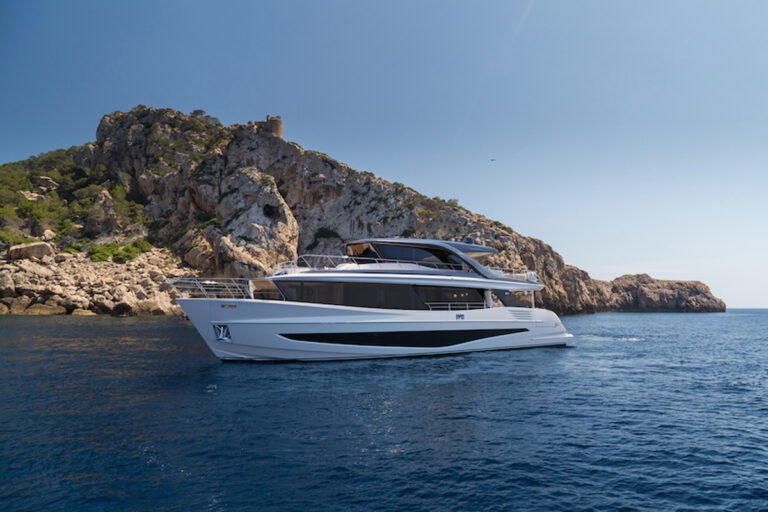
Yacht companies with mega-yacht divisions may have a leg up when creating their relatively smaller offerings. Why? In a phrase: trickle-down technology.
Whether it’s related to internal space optimization, engine-room layouts, wiring runs, onboard monitoring systems, build materials, glass usage, foldout terraces, beach clubs and more, technology usually goes from the top down.
Case in point: Azimut Yachts, part of the Azimut-Benetti group. Through extensive research and development, hull designs and ideas gleaned from mega-yacht builder Benetti, help Azimut to optimize a suite of features not widely seen in its market segment.
The Azimut 66 Flybridge, for instance, has a few technological gems from its company’s mega-yacht division. Azimut’s Home Automation System is a salon lighting array that allows the user to utilize four distinct presets. “You can set the ideal mood depending on the time of day,” said Azimut Brand Manager Federico Lantero. Then there’s also a glass panel between galley and salon that can be electrically frosted opaque. It’s a luxe touch of privacy for guests and chef alike.
Technology provides the solutions. Incorporating a suite of advancements that enhance performance at sea, the future of yacht building continues to make headway towards its overall goal of ultimate comfort.
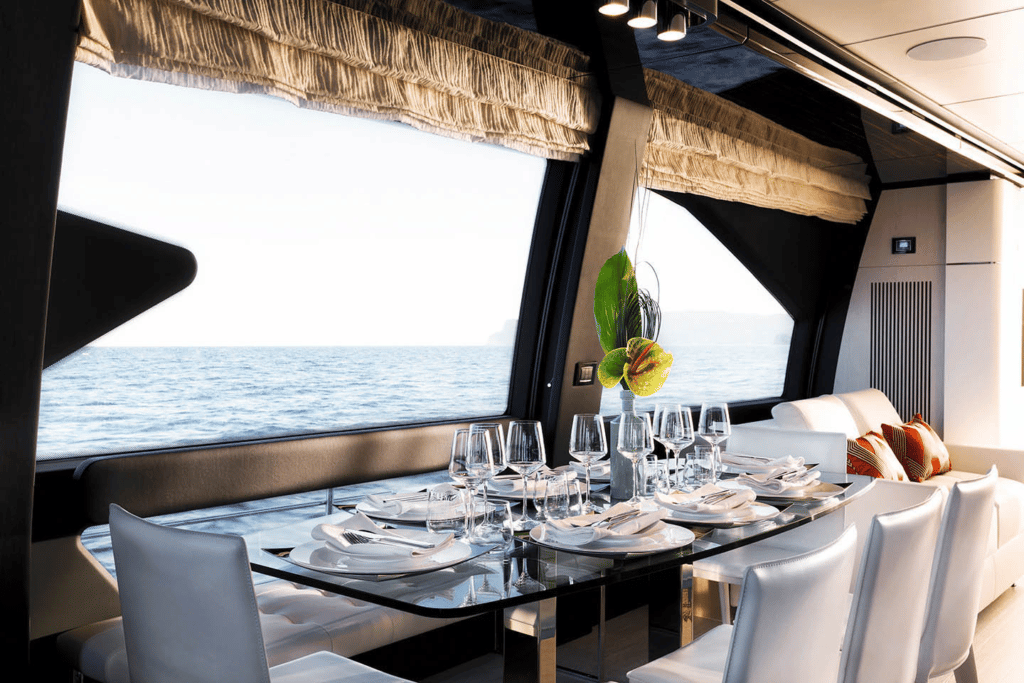
There’s also the hydraulic swim platform and teak beach on the Azimut 55S. The builder borrowed the concept from Benetti. The dinghy launch system unfolds her entire aft section, leaving both sets of stairs intact and providing not only an easy launch, but also a teak beach. And there’s room for a Willams 285 in her garage.
Technology allows the all-carbon fiber superstructure of the 72 Flybridge to be significantly lighter and stronger than fiberglass. With the weight savings, the interior volume of the 72 has 25 percent more space that the previous Azimut 70 Fly. The newer yacht’s flybridge spans almost half of her length overall too. “Using carbon fiber material not only gets us more interior volume in the salon, but provides the same mechanical strength provided by traditional fiberglass construction,” said Federico Ferrante, President of Azimut-Benetti USA.
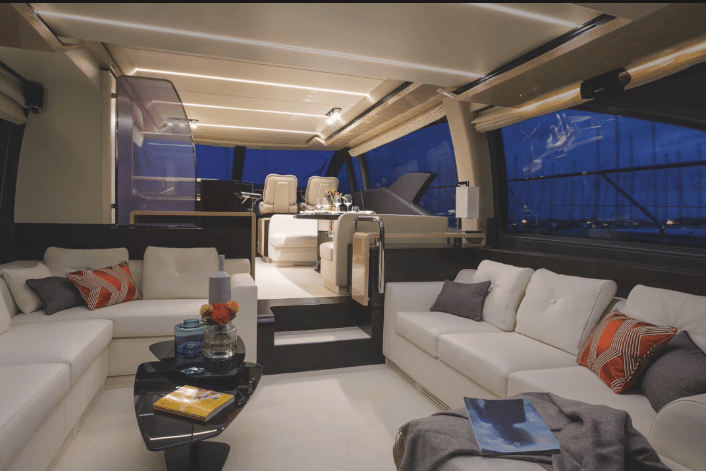
Designers were also able to add full-height windows on her main deck, a standard mega-yacht feature these days, but not so much on smaller yachts yet. Even with this space, there’s yet another sizeable gathering area on her foredeck, with 3 sunpads, seating for six at a U-shape settee and if desired, a sun awning.
All of this starts with the company’s Innovation System. Construction standards that are applied to the Azimut model line are based on what the builder learns in its innovation lab. Azimut’s system is partially modeled on Benetti’s, a setup that’s been developed since its inception in 1873. From hull testing to a host of quality control programs—with the goal of continually producing a better yacht. The aforementioned use of carbon fiber and vacuum-infused hulls came out of this program.
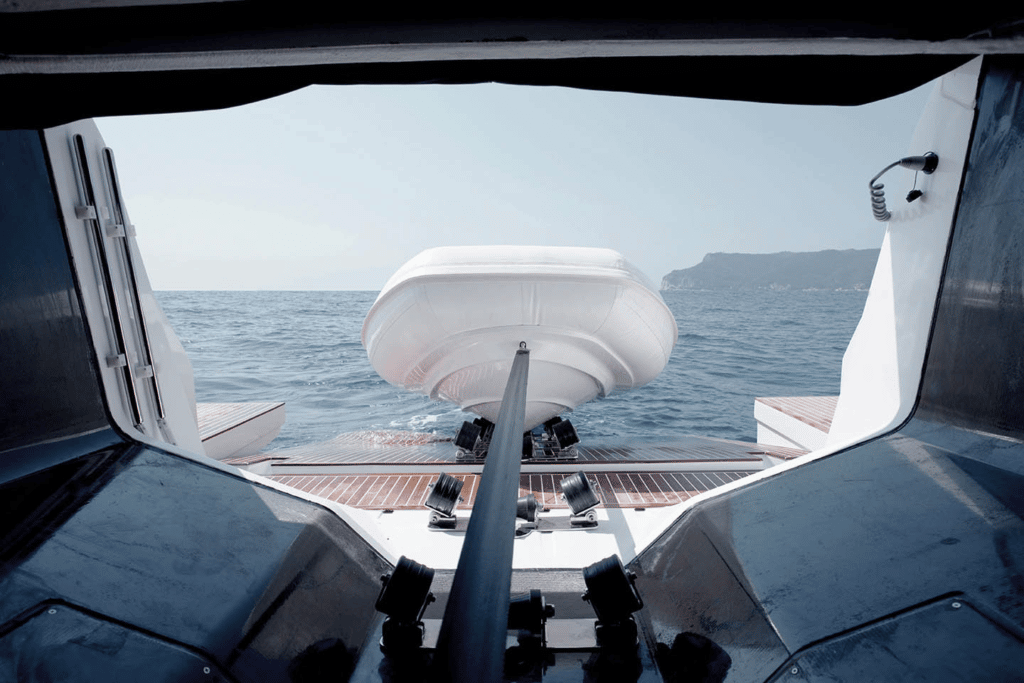
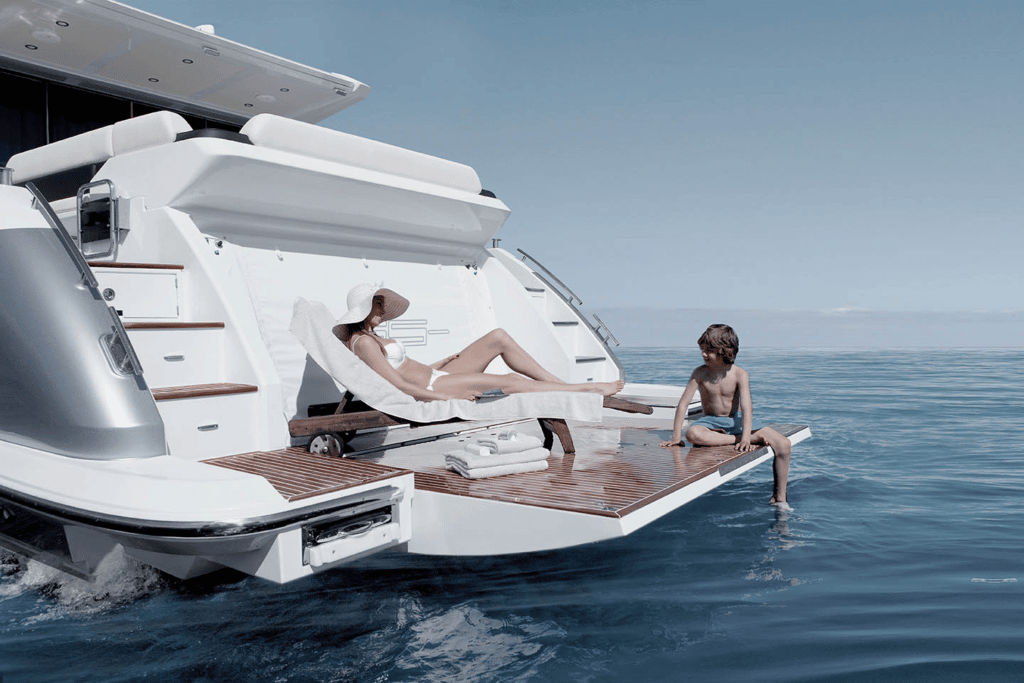
The builder’s Grande 35 Metri, also features mega-yacht flourishes such as a dedicated beach club and a side garage that can fit both a RIB and a PWC, uncommon features for a 115-footer.
Will some of these concepts soon show up on smaller Azimut models? “A design solution for Azimut becomes a design marker,” said Lantero, hinting that the trickle down of technology will continue.
